Denise Verrico's Blog: Immortyl Revolution, page 2
January 27, 2014
Paranormal Creatures A-Z
Greetings! Lots of news to share!
I've been absent from the blog for some time, but I've been busy moving, taking on another job, working on revised editions of the Immortyl Revolution books, as well as completing an entirely new urban fantasy novel and other projects.
Sadly, my former publisher, L&L Dreamspell, closed its doors after the tragic loss of one of the owners, Linda Houle. After my rights reverted back to me, I started a search for another small press that would pick up the series.
That being said, I have some exciting news to share.
Crazy Duck Press has picked up the series and a new edition of My Fearful Symmetry will be available later this year, followed by Cara Mia, Twilight of the Gods and Servant of the Goddess.
Since MFS can be read as a stand alone novel, we decided to go ahead and release it first, while I finish revisions on the prior two books in the series. Cedric, of course, will not be silent, so I'm developing the next installment of the Immortyl saga, which will be called the Immortyl Assassin series. The books will be narrated by Naveen, a century-old child vampire, introduced in MFS, who becomes Cedric's sidekick. Look for a short tale that intros Cedric and Naveen's upcoming adventures in this year's Vampire News!
Last year, I made the decision to change the focus of this blog to mythological and folkloric topics rather than author interviews and promos. Also, Cedric was clamoring for his own saucy corner of cyberspace, so we launched Sexy Cedric.
I had started a feature here, called Paranormal Creatures from A-Z, which relates to one of the PowerPoint presentations I do for libraries, schools and conventions. The series began with three posts on Angels and Angelic Beings.
Yes, I am crazy busy! My apartment is still in an unfinished state, and the dust bunnies are growing larger than my grey parrot, but I'll be adding additional posts in the series in coming weeks.
Please stop back. I promise I won't disappear again!

*Although the Immortyl Revolution novels are currently out of print, my short stories, Annals of the Imnmortyls, are still available.
I've been absent from the blog for some time, but I've been busy moving, taking on another job, working on revised editions of the Immortyl Revolution books, as well as completing an entirely new urban fantasy novel and other projects.
Sadly, my former publisher, L&L Dreamspell, closed its doors after the tragic loss of one of the owners, Linda Houle. After my rights reverted back to me, I started a search for another small press that would pick up the series.
That being said, I have some exciting news to share.
Crazy Duck Press has picked up the series and a new edition of My Fearful Symmetry will be available later this year, followed by Cara Mia, Twilight of the Gods and Servant of the Goddess.
Since MFS can be read as a stand alone novel, we decided to go ahead and release it first, while I finish revisions on the prior two books in the series. Cedric, of course, will not be silent, so I'm developing the next installment of the Immortyl saga, which will be called the Immortyl Assassin series. The books will be narrated by Naveen, a century-old child vampire, introduced in MFS, who becomes Cedric's sidekick. Look for a short tale that intros Cedric and Naveen's upcoming adventures in this year's Vampire News!
Last year, I made the decision to change the focus of this blog to mythological and folkloric topics rather than author interviews and promos. Also, Cedric was clamoring for his own saucy corner of cyberspace, so we launched Sexy Cedric.
I had started a feature here, called Paranormal Creatures from A-Z, which relates to one of the PowerPoint presentations I do for libraries, schools and conventions. The series began with three posts on Angels and Angelic Beings.
Yes, I am crazy busy! My apartment is still in an unfinished state, and the dust bunnies are growing larger than my grey parrot, but I'll be adding additional posts in the series in coming weeks.
Please stop back. I promise I won't disappear again!

*Although the Immortyl Revolution novels are currently out of print, my short stories, Annals of the Imnmortyls, are still available.
Published on January 27, 2014 18:37
December 6, 2013
Elves
Happy Saint Nicholas Day! Head over to Lorrie Unites-Struiff's blog, Flowers and Thorns today and read my post on elves.
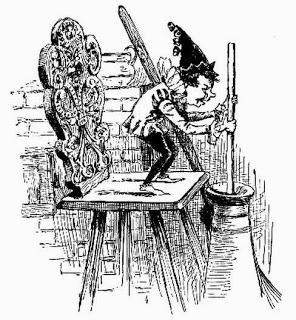

Published on December 06, 2013 07:53
April 5, 2013
Sidekicks: Editor Sarah Hans on a Quest for Diversity
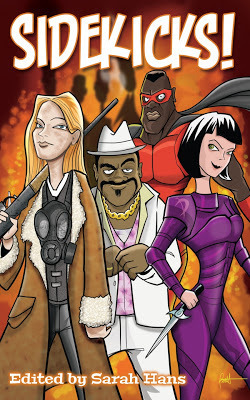
I’m really thrilled to be writing here on Denise Verrico’s blog, my very first attempt at guest blogging! Denise asked me to talk a little about the process of selecting stories for the anthology I just put together, a discussion of the genres represented by the stories I chose, and my personal quest to include diverse stories about characters of many genders, races, and sexual orientations. So here goes:
The hardest part of being an editor is deciding which stories to buy and which to reject. While rejecting an author you’ve never met is not fun, it’s truly difficult to reject a story from someone you know and like, and whose work you enjoy.
This is the position I found myself in during the story selection process for my editorial debut, an anthology called Sidekicks! As you’ve probably already guessed from the title, the anthology is about...that’s right...sidekicks. When I say the word “sidekicks” the first person you think of is probably Robin of “Batman &”. If you didn’t think of Robin, you probably still thought of a superhero sidekick (and if you didn’t, have a gold star for Thinking Outside the Box). Most likely, he’s a white male sidekick working for a white male superhero. It’s not your fault that this was your first instinct. White males make up the vast majority of comic book content creators, even in 2013. So naturally a lot of their stories, and the subsequent movies, reflect this. Our culture is permeated with images of white male heteronormativity.
It’s paramount for authors, however, to fight against the tide and write about the idea that is not the most obvious one. So in general, unless you’ve been writing for many years, it’s a good idea to toss the first and maybe even the second idea you have. Work with the ones that come after that. The obscure ones. The unique ones. The ones that make you really excited.
That, as it turned out, was the key to having a story published in Sidekicks! I asked for stories from a variety of settings, about characters of color and LGBTQ characters. I received a number of these, and I’m proud to say that the book contains three stories with gay or lesbian protagonists (we would have had four, but I asked one of my authors to change their protagonist to a male--more on that in a minute) and three stories with protagonists of color. Sadly I didn’t receive any stories about trans characters, and I think that six total stories out of twenty is not really enough total representation. So while I’m proud of this first anthology, and the broad spectrum of characters it represents, I have a personal goal to do better in future where minority representation is concerned.
I was also interested in stories outside of the superhero genre. I wanted a range of good guys and bad guys, settings and locations, themes and styles. So I purchased only a handful of superhero stories and filled in the rest of the anthology with tales from other genres. Those who sent me science fiction, westerns, fantasy, etc. had an edge. Their stories stood out in a sea of superhero tales. Even so, some stories just weren’t the right fit for one reason or another. And two stories were submitted about characters based on Igor, that most classic of sidekicks. Both were good, but again, diversity won out: I picked the one with the gay romance.
That’s right, Igor gets his gay romance on in Sidekicks!, courtesy of author Kathy Watness. Am I making you want to read it yet?
Anyway, you get the point I’m making, right? Should I beat you over the head with the DIVERSITY SELLS STORIES stick some more, or shall we move on?
Interestingly, after the first wave of submissions, I had a gap in the anthology. I had 18 stories and not a single one was about a male sidekick with a female...we’ll call it a “dominant” person, because not all of the characters in the book are good guys, making the term “hero” inappropriate. (Let’s just get the “OMG dominant, that’s kinky” snickering out of the way, shall we? I’ll wait.)
I asked one author to change the gender of a particular protagonist to male (I’ll give you a cookie if you can guess which story) and commissioned three other stories with male protagonists and female dominants, two of which I purchased, rounding out the anthology with a tidy 20 stories, and giving me three with male protags and female dominants. One of these has an alien protagonist, which still makes me grin--thanks go to author Neal Litherland, who deserves a gold star AND a cookie for really stepping it up.
I hope that after reading this you’ll give Sidekicks! a try--it’s on sale at Amazon.com right now for less than $10!--and also consider reading (and writing) more diverse fiction. If you’d like to hear Sidekicks! authors read their work live, we have events coming up in Dayton, Ohio at Epic Loot Games and Comics (4:00-6:00 pm on Saturday, April 6) and in Madison, Wisconsin at A Room of One’s Own (6:30 - 8:00 pm on Wednesday, April 24). If you’d like to discuss the contents of this guest blog post, you can find me on my blog, twitter, or facebook! Thanks for reading!
Published on April 05, 2013 05:00
March 31, 2013
Dark Salvation by Katie Salidas Launch
Book Launch Dark Salvation by Katie Salidas
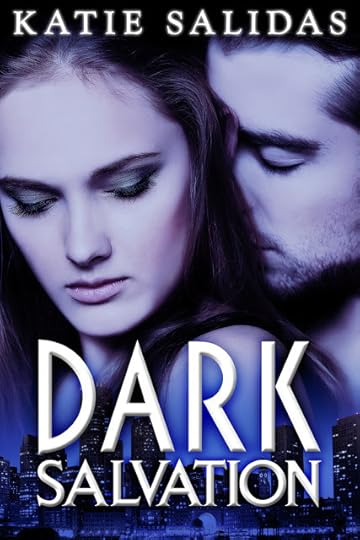
A gathering storm of violence is on the horizon. Whispered threats of the Acta Sanctorum’s return have the supernatural world abuzz. Only recently aware of the other world hidden behind our own, Kitara Vanders has barely scratched the surface of what being supernatural truly means. A special woman in her own right, she possesses unique telepathic abilities, gifts that have recently come under the scrutiny of the Acta Sanctorum, a fanatical organization whose mission is to cleanse the world of anything supernatural. Targeted and marked for death, Kitara’s only hope lies with the lethally seductive yet emotionally scarred warrior Nicholas. Knowing full well the atrocities of which the Acta Sanctorum is capable, Nicholas is all too eager for the battle to begin. Fueled by pain and rage from the loss of his mate, he’s itching for a fight, but one thing stands in his way: Kitara, a beautiful dark-haired woman with unique psychic abilities and an unusual link to the Saints. Despite his resolve to remain focused on his mission, a purely physical relationship binds them together in a way neither of them expected. And when her life hangs in the balance, Nicholas finds his own is teetering on the edge too.
Excerpt:
“You really don't care about human life, do you?" Though her heart pounded erratically with fear, there was none in her angry voice.“Nope.” Nicholas was not about to get into a morality war with this woman. He pulled out the dead man’s wallet and tossed it aside. “Nothing good here.”“You’re an asshole, you know that?”He’d been called that by so many people, but somehow hearing her say it struck a chord with him. “I’ve been called worse.” He tried to sound as if he didn’t care, but for some strange reason, he did. He opened his mouth to say something, but found the words escaped him. Humans never understood. Perhaps it was better off she thought him a jerk. “I can’t believe you. Human life has to hold some meaning.”“It does. If humans weren’t around, I’d have to eat animals.”“You’re nothing but a monster, just like Jeremy said.” That hurt. He had saved her life, and she hated him for it. He turned on her, anger setting his heart pounding. How dare she talk this way to him after he’d saved her? “He would have killed you without a second thought. That’s what the Saints do. They are the real monsters, not me.”Perhaps it was his suddenly sharp tone, or maybe she realized he was telling the truth; whatever it was, Kitara paused. He heard her take a deep breath. “I’m sorry. I shouldn’t have snapped at you like that. You did save me. I’ve... I’ve just never witnessed a murder.” Her body was still trembling, and her heart thumped so erratically that he wondered if she might pass out. The tang of her fear wafted up to his nose. “You tore that guy’s throat out, in front of me. You killed him. You drank his blood.” Nicholas attempted to temper the anger in his voice with patience in the hopes of getting her to relax. "Vampires drink blood, sweetheart.”
Amazon UK Barnes & NobleSmashwordsKobo
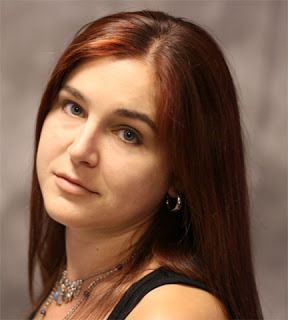
Katie Salidas is a Super Woman! Endowed with special powers and abilities, beyond those of mortal women, She can get the munchkins off to gymnastics, cheerleading, Girl Scouts, and swim lessons. She can put hot food on the table for dinner while assisting with homework, baths, and bedtime… And, She still finds the time to keep the hubby happy (nudge nudge wink wink). She can do all of this and still have time to write. And if you can believe all of those lies, there is some beautiful swamp land in Florida for sale…Katie Salidas resides in Las Vegas, Nevada. Mother, wife, and author, she does try to do it all, often causing sleep deprivation and many nights passed out at the computer. Writing books is her passion, and she hopes that her passion will bring you hours of entertainment.
Blog
Publisher
Published on March 31, 2013 21:04
March 29, 2013
Paranormal Creatures A-Z: Angelic Beings in World Mythology
Greetings! This weekend I'll be at Marcon in Columbus, OH. One of the panels I'll be on concerns the popularity of angels in fantasy. Since I'm currently writing an urban fantasy featuring an angelic being, I thought this panel would be fun, especially since I've been doing research on the topic and sharing my findings here at the blog.
In the previous posts I discussed angels in Christianity, Judaism and Islam. Today, I'll touch on angelic beings from other cultures and religious traditions.
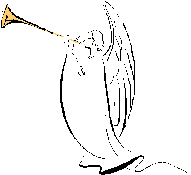
Angelic Beings in World Mythology
Beliefs in beings similar to angels are found in many cultures throughout human history. The idea of representing spirits as winged figures is thousands of years old. Ancient Egyptians portrayed the sun god Horus as a winged disk. The Assyrians believed in the Shedu or Lamassu, a protective spirit or deity often depicted with a man’s head, a bulls body and eagle’s wings that may have influenced the Israelite’s view of angels. Winged beings can be found in ancient Greek and Roman art, such as the depiction of the god of love Eros and his consort, the personification of the soul, Psyche.
Indian mythology includes several beings that act in a similar way to angels. Devas are gods and goddesses whose name literally means “shining ones”. They are also referred to as Sura. Evil spirits or demons that embody baser instincts are called Asura.
In the retinue of the chief of the gods Indra are also beings called apsaras and gandharvras. Apsaras are beautiful, seductive female dancers and gandhavras are handsome male musicians. Apsaras are often the wives of gandhavras. The apsaras are guardians of fallen heros, like the Norse Valkyrie and like the muses in Greek mythology they represent various forms of art. Gandhavras may be warriors as well as performing artists. Both apsaras and Gandhavras are said to fly and act as intermediaries of the gods.
Dakini are female figures in Buddhism, Hinduism and Tantra. Thew word Dakini means essentially a “woman who walks in the sky”. In India, dakini are the attendants of Kali. They are said to sometimes inhabit battlefields and cremation grounds. In Tantric Buddhism, the dakini is seen as the embodiment of enlightened energy.
Tennin are female heavenly messengers in Japanese Buddhism. They are depicted as beautiful women who wear exquisite feathered kimonos and have the ability to fly. They sometimes are companions to Bodhisattva, enlightened beings that are looked upon as angels or gods by some. The term Bodhisattva, however, also means anyone on the path to enlightenment.Some Central African tribal groups, particularly in Gabon, believe in Ombwiri. These are ancestor spirits similar to guardian angels.
Orisha are spiritual beings in the West African religion Yoruba that have been compared to angels. The Yoruba believe that the Orisha were once human beings who led notable lives and became Gods at death. Orishas are also important in Santeria.
The Norse believed in the Valkyrie, female spirits that could either take the form of swans or Amazonian warriors, depending on the source. “Light” elves are fair, beautiful beings with supernatural powers, similar to angels. However, surviving tales depicting these elves may have been somewhat be influenced by the Christian belief in angels brought into Scandinavia.
As I've said before, this particular topic is vast. I've barely scratched the surface in these posts. If any of the readers would like to contribute to the discussion, please feel free to mention your findings in the comments.
My next post in the series will be on BANSHEES.
Have a great day!
Published on March 29, 2013 06:00
March 9, 2013
Paranormal Creatures A-Z: Angels Part 2
Greetings! Today, I have a little more about angels. As I said in my last post, there is a lot of information out there on the subject of angels, so I decided to break this topic into smaller bits.
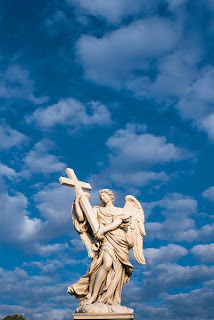
Characteristics of AngelsAngels lack a physical body, so they manifest in a variety of ways. They sometimes take the form of as human beings if the mission requires, or may appear with wings, as beings of light, or in other forms.
Many Christians regard angels as asexual beings. However, biblical angels have masculine names. Angels are usually depicted in painting and sculpture as winged male human beings, yet in Western decorative arts they are often shown as winged female figures. In the Bible, only cherubim and seraphim are said to wings. No lower level angel is ever mentioned as having wings.
Angels are sometimes portrayed as being composed of Aether. Aether (also called ether) is a substance said to have filled the whole of space. This term was adopted from ancient Greek philosophy and science. Aristotle believed that the physical world was made up of four elements: air, earth, fire and water. According to him, Aether was the fifth element and most important element that held these together. In Greek mythology, Aether, or Acmon, is one of the primordial Greek deities, the first-born elementals and the personification of celestial light.
Similarly, in Hindu and Buddhist philosophy, everything in the universe is composed of Akasha (Aether). It is considered to be the unifying energy which exists in every living being, and the basis and essence of the material world. It was the first material element created from the astral world, followed by air, fire, water and earth. So, in a sense “The Force.”
Some more angels:
Fallen Angels are those who are seen as rebelling against God. They are often called devils or demons and portrayed as the opposite of angels. They are associated with evil, death and destruction.
Sataniel/Satan- Tempts humans, serves as an adversary, and brings people's sins before them in the heavenly court. He is known by many names, such as:Lucifer- First Light of the Morning; Morning Star, God's first living creation. Most beautiful of all angels, betrayer of the hosts of heaven.BeelzebubMephistopheles
Other Angels in Judeo-Christian Religious Tradition
Uriel (translation: God is my light), leads us to destiny.
Samael- An angel of death.
Sandalphon- Battles Samael and brings humankind together.
Camael/Chamuel- Expelled Adam from the Garden of Eden and punishes those who transgress against God.
Metatron- God's heavenly scribe recording the deeds of all that is.
Angel of the Waters- In John 5:1-4 an angel "troubles" the waters of the pool of Bethesda in Jerusalem, giving the water healing properties that will heal anyone who bathes in it. On Bethesda Terrace in Central Park in NYC, there is a statue atop a fountain commemorating the event. John 5
Published on March 09, 2013 13:33
February 23, 2013
Paranormal Creatures A-Z Week 1: Angelic Beings
Greetings! As I write this, I'm looking out on a cold, gray morning in Central Ohio and wishing spring was here. I've been busy trying to finish a novel and some other projects that I hope to talk about soon, but I wanted to make sure I didn't neglect the blog.
As I mentioned in my earlier posts, I'm changing the focus of my blog to center on mythology and folklore topics.
Since I was a little kid, I've been fascinated by cultural traditions and beliefs from around the world. As a fantasy author, I’m always on the hunt for monsters and supernatural beings to spark the imagination. In this research, I've come across of lot of neat information that I’d like to share with readers and writers in upcoming posts.
This post is the first of a feature I’m calling “Paranormal Creatures from A-Z”.
So, let’s start with A:
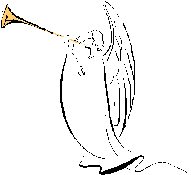
Angelic Beings
Angels are common figures in fantasy fiction and pop culture these days, so I thought I would start with them. Heck, I even have an angel in the novel I'm currently writing. There is a multitude of information written about angels, both from religious and folkloric points of view. It's rather daunting to delve into, but fascinating stuff.
For the purposes of this post, I use the term “angelic beings” rather than “angel”. Why is this? Although I’ll talk about biblical angels, there are many examples in world mythology of beings that resemble Judeo-Christian angels. These I'll discuss in a later post.
Today, I'll touch on the role of angels in four religious beliefs that are based on revelation: Zoroastrianism, Judaism, Islam and Christianity. I'll also talk a bit about the Catholic hierarchy of angels.
The word angel in English is a fusion of the Old English engel and the Old French angele. Both of these terms derive from the Latin angelus and the ancient Greek aggelos, a word roughly meaning a “message bearer”.
Angels play an important role in Christianity, Judaism, Islam and Zoroastrianism. In these religions, angels bridge the gap between God and humans. They teach lessons, deliver commands or carry information from the divinity to humankind.
In Zoroastrianism, the force of good, called Ahura Mazda, fights that of evil, Ahriman. These two forces command armies of angels and devils, similar to those of Yahweh (God) in the Old Testament.
There are other interesting parallels between these two beliefs. Like Zoroastrianism, Judaism divides the universe into earth, heaven, and hell. In both religions, angels fulfill a similar role, acting as an intermediary between heaven and earth in order to reveal God's plans and laws. They serve God, carry out his will, reward goodness, punish evil and conduct righteous souls to heaven. Angels also perform a revelatory function, helping people to understand God's will. These angelic functions are also true of Christianity.
Islamic angels are also similar those of Judaism and Christianity. However, while the former beliefs divide spiritual beings into angels and demons, Islam goes further and divides such beings into angels, demons, and djinni. Djinni (genies) may be either good or bad. They were created from fire, can be either visible or invisible, and have the ability to assume human or animal form.
In Christianity, angels are spiritual beings. Some of these can see the face of God and are in a state of perpetual bliss. God is said to have bestowed angels with wisdom, freedom, and power, but some angels were proud and turned away from their creator, becoming the fallen angels. Catholic tradition assigns the angels to nine hierarchies or choirs.
The Nine Choirs of Angels
Seraphim- The highest choir, attendants or guardians before God's throne. They praise God, calling, "Holy, holy, holy is the Lord of Hosts”. Seraphim have six wings; two cover their faces, two cover their feet, and two are for flight.
Cherubim- Second highest of the nine choirs. Manlike in appearance and double-winged. The Old Testament gives no evidence that the Jews considered them as intercessors or helpers of God, but in the New Testament, they are alluded to as celestial attendants in the Apocalypse. Catholic tradition describes them as angels who have an intimate knowledge of God and continually praise Him.
Thrones-Thrones are angels of humility, peace and submission. They reside in the area of the cosmos where material form begins to take shape. The lower angels rely on Thrones to access God.
Dominions-Dominions are angels of leadership. They regulate the duties of the angels, making known the commands of God.
Virtues- Known as "Spirits of Motion". Sometimes referred to as "the shining ones." They govern nature and control the elements, seasons and celestial bodies. They facilitate miracles and inspire courage, grace, and valor.
Powers- Warrior angels (also known as potentates) that defend both the cosmos and humans. They fight evil spirits who attempt to wreak chaos through human beings. Their chief is said to be either Samael or Camael.
Archangels- Chief or leading angels. The most frequently mentioned angels in the Bible. There are seven who stand before God. They may belong to other choirs, such as St. Michael the Archangel, who is also a Seraph. Archangels have a unique role as God's messenger to humanity at critical times.
Three of these are mentioned in the bible:
St. Michael is viewed as patron and protector of the Church from the time of the Apostles. The Eastern Rite and other sects place him over all the angels, as Prince of the Seraphim. He was the leader of the forces of heaven in their triumph over Satan and his followers.
Gabriel first appeared in the Old Testament in the Book of Daniel. In the New Testament, the Gospel of Luke, he appeared to Zechariah to announce the birth of St. John the Baptist and proclaimed the Annunciation, telling Mary that she would be the mother of Jesus. Tradition (but not scripture) says he will sound the trumpet signaling the Apocalypse.
Raphael first appeared in the book of Tobit. He announces "I am the Angel Raphael, one of the seven who stand before the throne of God." He is known as Raphael the Healer.
PrincipalitiesI've read conflicting information regarding this order. Principalities are described as having given valuable skills and gifts to man, yet they are described in some accounts as hostile to God and human beings.
AngelsThese are closest to the material world and human begins. They deliver prayers to God and carry God's answers and other messages to humans. They have the capacity to access all other angels at any time.
This hierarchy, of course, reflects Catholic beliefs, other Christian sects don't necessarily subscribe to this view and may have radically different beliefs regarding angels. In upcoming posts, I'll touch on some other angels and beliefs from the Judeo-Christian tradition, as well fallen angels or demons.
I hope you found today's post informative. I'm hoping the brief tidbits in this feature will serve as a jumping off point for those who want to learn more about the beings and creatures I discuss.
Here is the complete list of creatures I'll be featuring in Paranormal Creatures from A-Z:
Angels and Angelic BeingsBansheeCentaurDragonElves/FaeFox Spirit (Kitsune}GhostHydraImpJinnKrakenLoch Ness MonsterMinotaurNagaOmukadePixieQualupalikRocSirenTepuaUnicornVampireWerewolfXlotlYetiZombie
1
Published on February 23, 2013 07:24
February 14, 2013
Love and Courtship Customs

A lot of folks are anxious about finding that perfect Valentine’s Day tribute for that special guy or gal. Many of us will be spending money on flowers, candy, fancy dinners and sparkly jewelry. That set me to wondering about these customs. So, off I went into the wilds of the internet. I found some fun facts about customs surrounding love that I’d like to share.
Medieval Courtly LoveDid you know that a lot of the courtship rituals practiced today have their roots in history? Medieval marriages were generally arranged to acquire property and money or form political alliances. The notion of courtly love was a reaction to this practice. Marriage in those days had little to do with love. Courtly love was celebrated in poems and song and became a way for nobles to express the tender feelings not found in their marriages.
Chastity and honor were highly regarded virtues in medieval times. Courtly love idealized pure love, not sex. It relied on elaborate codes of behavior and emotional attachments. "Lovers" had trysts in secret, which were never physical. Yet the church condemned courtly love.
Although much of the poetry and other writings of the time allude to courtly love, there is some doubt as to whether the practice of courtly love really existed or was just an elaborate, ritualized smokescreen for adulterous affairs.
Many of today's courtship rituals evolved from customs of medieval chivalry, such as serenading a loved one with music, writing love poetry and giving gifts of flowers and sweets. So, this Valentine’s Day, when you get that long-stemmed rose or dive into that box of chocolate truffles, remember those long ago knights and ladies.
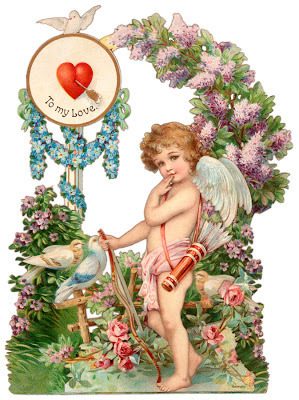
Fun Facts about Love, Courtship and Valentine’s Day
The Catholic Church recognizes at least three different saints named Valentine or Valentinus, all of whom were martyred, but the celebration of Valentine’s Day has its roots in a pagan fertility festival, Lupercalia.
During the Middle Ages, it was commonly believed in France and England that February 14 was the beginning of birds' mating seasons.
Americans probably began exchanging hand-made valentines in the early 1700s. In the 1900s, printed cards became more popular.
According to the Greeting Card Association, an estimated 1 billion Valentine’s Day cards are sent each year.
Women purchase approximately 85 percent of all valentines.
Delicate twine is used in the Hindu Vedic wedding ceremony to bind one of the bride's hands to one of the hands of the groom.
Chivalrous English gentlemen often sent a pair of gloves to their ladyloves. If the woman wore the gloves to church on Sunday it signaled her acceptance of his proposal.
In Norway when a girl came to the age of marriage, her father let it be known she was available to suitors. The girl then wore an empty sheath on her belt. If a young man liked the girl, he would place a knife in the sheath, signifying betrothal.
The Puritans considered jewelry frivolous, so a man would give a woman a thimble when they became engaged.
Published on February 14, 2013 05:30
February 5, 2013
Vampire Lore
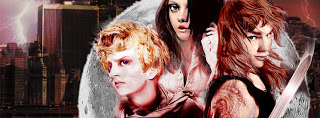 When I set out to write my first Immortyl Revolution novel, I read a lot of books on vampire legends and the classic stories. Although I decided to go with a more science fiction take on vampirism, I do play around a little with the myths in my books. In my reading, I found that almost every culture has some sort of vampire myth. Most of the legends with which we are familiar come from the Slavic tradition of Eastern Europe. These along with the legend of the real life Vlad Dracul inspired Bram Stoker to write the most famous vampire tale of all time, Dracula. I find the real-life Dracula far more scary than any literary vampire. Vlad Dracul (son of the dragon) or Vlad the Impaler was a 15th century Wallachian prince. As a boy of eleven, the Ottoman Turks took him hostage along with his brother, Radu the Handsome. It is probable that during this time that Vlad suffered sexual abuse at the Ottoman court. His brother, however, converted to Islam and went on to serve the Sultan. These factors may well have contributed to Vlad’s intense hatred of the Turks and inspired him to invent a particularly ghoulish way of dealing with his enemies. Vlad’s victims were impaled with a large wooden stake that went through the anal cavity and up through the internal organs, ending out of the mouth. The impaled prisoners were then set up around Vlad’s castle to terrorize their comrades. Legend has it that these unfortunates often suffered for two days before dying. Recently scientists have explored the story with computer models, concluding that it is indeed possible to impale a body this way to prolong suffering.The folkloric traditions of Eastern Europe have inspired much of the popular vampire lore. In Slavic culture, belief in spirits both good and evil abounded. Demons in either human or animal form were said to feed on the blood of livestock and human beings. Vampires were the resurrected dead, pale of complexion with long fingernails and elongated teeth. Sometimes they had only one nostril. They were bloated, mindless creatures that preyed on their own families and haunted their villages
When I set out to write my first Immortyl Revolution novel, I read a lot of books on vampire legends and the classic stories. Although I decided to go with a more science fiction take on vampirism, I do play around a little with the myths in my books. In my reading, I found that almost every culture has some sort of vampire myth. Most of the legends with which we are familiar come from the Slavic tradition of Eastern Europe. These along with the legend of the real life Vlad Dracul inspired Bram Stoker to write the most famous vampire tale of all time, Dracula. I find the real-life Dracula far more scary than any literary vampire. Vlad Dracul (son of the dragon) or Vlad the Impaler was a 15th century Wallachian prince. As a boy of eleven, the Ottoman Turks took him hostage along with his brother, Radu the Handsome. It is probable that during this time that Vlad suffered sexual abuse at the Ottoman court. His brother, however, converted to Islam and went on to serve the Sultan. These factors may well have contributed to Vlad’s intense hatred of the Turks and inspired him to invent a particularly ghoulish way of dealing with his enemies. Vlad’s victims were impaled with a large wooden stake that went through the anal cavity and up through the internal organs, ending out of the mouth. The impaled prisoners were then set up around Vlad’s castle to terrorize their comrades. Legend has it that these unfortunates often suffered for two days before dying. Recently scientists have explored the story with computer models, concluding that it is indeed possible to impale a body this way to prolong suffering.The folkloric traditions of Eastern Europe have inspired much of the popular vampire lore. In Slavic culture, belief in spirits both good and evil abounded. Demons in either human or animal form were said to feed on the blood of livestock and human beings. Vampires were the resurrected dead, pale of complexion with long fingernails and elongated teeth. Sometimes they had only one nostril. They were bloated, mindless creatures that preyed on their own families and haunted their villagesDiffering stories surrounded the creation of vampires. Some said that if one was illegitimate or the seventh son of a seventh son one was destined for vampirism. Death in childbirth or a cat or dog jumping over a corpse could result in a vampire. Slavic vampires didn’t exactly sparkle in the sunlight, but in some Malaysian stories they do. Chinese vampires hopped. In Russia they were said to be witches who rebelled against the church. Yet many of the popular conceptions of vampires came from books and films not folklore. For example, the idea of vampires catching fire when hit with sunlight is most likely from the German film, Nosferatu. Vampires did hunt at night in legend, but this is most likely because it’s the best time to catch people in a vulnerable state like sleep and not get caught. A stake through the heart is traditional but not as the killing weapon. The stake only held the vampire pinned to one spot for beheading, the only way to truly kill one. Although most of the pop culture vampire myths were spawned in Eastern Europe, a lot of evidence points to the legends arising out of India. The Immortyl culture of my series arose from ancient India.
Indian mythology gives us many examples of vampire-like spirits and deities. In the various regions are found a plethora of demons that inhabit cremation and burial grounds that bear a striking resemblance to the vamps of Eastern Europe. Many of these are said to be the spirits of those who died an unnatural death, or a woman who died in childbirth. Others are succubus-like creatures that drain men of energy yet leave him with a feeling of euphoria. It is likely that traders along the Great Silk Road and gypsies carried these stories west.
In Greece, the tales gave inspiration to the Lamiae, or female vampire-like spirits.
One deity often associated with vampirism is Kali, a fierce form of the mother goddess and consort of Shiva. Like her husband she both creates and destroys. She’s often shown standing on the body of Shiva, symbolizing that in the scheme of the cosmos the male principle is subordinate to that of the female.
Kali is usually depicted with dark blue or black skin and three eyes. She wears body parts as jewelry and has a tongue that sticks out in defiance. Her favorite places are battlefields where she becomes intoxicated on the blood of victims.
Yet she is often misunderstood in the West. Kali is the goddess of time, not death. She only slays evil demons. Symbolically, she annihilates the selfish impulses and ego that bind us to our material bodies. Her aspect is fearsome, but she is called Kali Maa (Mother Kali) and is revered in many parts of India. Kolkata (Calcutta) is sacred to her and named for the goddess.
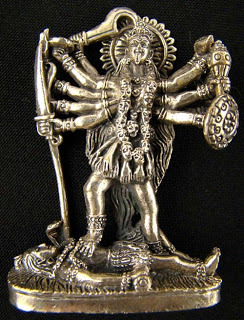
Tantric cults often focus on Kali. Tantrism is an older religious tradition than Hinduism, dating back before the Aryan tribes migrated into India. These groups center on Shakti worship and sometimes use sex and even blood in their rituals. The idea behind this is to gain control over the body to capture divine energy and gain blessings. The adepts of the ancient arts in my novels practice a form of tantrism. Only one group associated with Kali was violent and that was the Thugees. These devotees would waylay travelers and use them as blood sacrifices to the goddess. The Thugees were the inspiration behind the Kali worshipers in Indiana Jones and the Temple of Doom.No discussion of vampire myth would be complete without Lillith. In Hebrew tradition, Lillith is the first wife of Adam. She refuses to accept male dominance and leaves for her home by the Red sea. She couples with demons, giving birth to one hundred offspring a day. God sends three angels, Sanvi, Sansavani and Semagelaf to bring her back to Adam and slay her demon children. Lillith takes revenge by preying upon the children of Adam and Eve.
The three angels force Lillith to swear she will leave anyone alone who wears an amulet bearing their image or names. Up until the nineteenth century such amulets were given to newborn children and child-bearing women to ward off Lillith. There may even be a connection between Lillith and the mythology of India. Some say that the name Lillith means “Lily” or “Lotus”. This flower symbolizes female genitalia, or yoni and the gateway to the underworld.In my research, I found it curious that while so many vampire myths of the east seem to be centered on a fear of female power, the vampire stories of the west often focus on the male vampire. The zombie-like revenants of Slavic culture somehow arose into the suave and sophisticated “gentleman vampire” of Gothic literature. The evolution is attributed to the novel, The Vampyre, written by John Polidori. It’s commonly believed that the 19thcentury English poet, George Gordon, Lord Byron, inspired the depiction of the vampire in this book. Polidori, a recent medical school graduate, accepted a position as Byron’s personal physician and traveled with him to the continent. Byron was a kind of rock star in his day, known for his scandalous love affairs with both sexes. He created what is known as the “Byronic hero”, a deeply flawed man given to bouts of melancholy. Lord Byron, his mistress Claire, the poet Percy Shelley, Mary Shelley and Polidori participated in a contest to write a ghost story.
The most famous of these, Mary Shelley’s Frankenstein, spawned the genre of science fiction. Polodori’s tale was most likely begun by Byron and abandoned. In any case, Polidori finished and published it. While not as well known as Frankenstein’s monster, the compelling vampire, Lord Ruthven set the stage for Count Dracula, Anne Rice’s Louis and even Twilight’s Edward Cullen.Vampires have been a staple of popular culture since the nineteenth century. The popular “penny dreadful” Varney the Vampire was a serialized tale that was eventually published in book form. Comic books gave us Vampirella,an alien vampire of the planet Draculon. Everyone is familiar with the friendly Count of Sesame Street. I sometimes wonder if it was intentional that he shares the vampire’s legendary, obsessive compulsive need to count things like spilled grains of rice. The twentieth century took a more sympathetic view of the vampire. In the nineteen fifties, we saw the rise of the science fiction vampire, with the publication of Richard Matheson’s classic, I Am legend. In this story, vampirism is caused by a virus, to which the hero, Robert Neville is immune. Night after night he kills off the vampires, eventually coming to the conclusion that he is the monster. The novel has inspired three films. The sixties gothic soap opera Dark Shadows starred Jonathan Frid as the reluctant vampire, Barnabas Collins. The show became a pop culture phenomenon, long before Stephanie Meyer’s Twilight. Later, Chelsea Quinn Yarborough’s Saint Germain novels, Anne Rice’s Vampire Chronicles and the long running TV series, Buffy the Vampire Slayer also presented vampires in a more positive light. Stephen King’s novel Salem’s Lot and films like From Dusk Till Dawn featured the horrific vampire, proving that the genre has many viable facets.In the twenty-first century the vampire became a romantic hero, the love interest to the human heroine of paranormal romance, as in Twilight. Authors like Charlaine Harris combined mystery with paranormal elements, creating a new type of urban fantasy novel. Justin Cronin’s bestseller, The Passage and others like my Immortyl Revolution series hearken back to the sci fi vampire of the fifties. Horror novels may not be as popular as in years past, but the horror vampire is alive and well in films like Thirty Days of Night.There’s a lot of talk out there as to whether vampires are a fad that will die out eventually. I say no. Vampires have established themselves in literature and entertainment as a genre with many sub-genres, catering to all tastes. Of all the monsters, they are the most human in aspect, the dark reflection of humanity and a powerful archetype that will continue to evolve as we do.
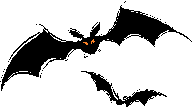
Published on February 05, 2013 18:18
January 19, 2013
Sexy Cedric Interviews the Vampire Queen
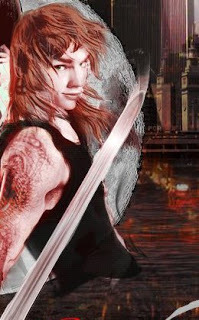 Your Host with the most, Cedric MacKinnon
Your Host with the most, Cedric MacKinnonWelcome back, my loves! I hope you had a wicked time over the holiday season. There will be a few changes coming for yours truly. The authoress and I have decided I should have my own blog, so I'll soon be striking out on my own. Today, I have a special treat for you! I'm pleased to welcome the Vampire Queen as my guest.


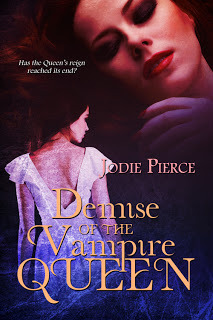
Welcome to Sexy Saturday with Cedric! I do hope you’ll share a few spicy tidbits, my darling. It’s always a pleasure to interview a daughter of the blood. So, settle into my hot seat of love and introduce yourself to the readers.
CM: To start us off, why don’t you share some of your history—don’t spare any juicy details. I understand you’re a queen. Trust me, you’re not the first queen I've interviewed here. I rather seem to attract them. I wonder why. Do I need to call you, “Your Majesty” or something like that? You must have a lot of interesting stories to tell.
You may call me The Vampire Queen or Countess De Lourdes. I am THE ancient one, creator of all early vampires, the mother of the race and purifier of the race as I’m fed up with pretenders. It is my mission to purify my race by all means possible. My emotions range from bitchy, savvy, seductress, lover, powerful and feisty, just to name a few. I lay down into the earth when I am fed up with the times and rise in about 100 years to a whole new world. However, I must relearn everything I knew as over the time my mind starts to forget all I once knew. I try to keep those around me that I can trust for when I rise but you never know where one’s loyalties lay. I strive for control and power and take every advantage of situations that will allow me to enforce my power. I took control on my night of redemption upon my latest rising, a looked for control in Venice, and I was in total control in my school in Scotland. I take lovers of both sexes as I’m not big on gender roles but who the person is.
CM: Ah, I agree. Why limit oneself to one sex? Or one lover for that matter. You have a rather interesting mission concerning your fellow vampires. I’m a rebel myself. Can you share a little about your vampire culture?
My wish is to be worshiped, but I hate pretenders. They just piss me off. I want to know that MY people love me and worship me and can do so in the open without fear from the pretenders. In Japan, I learned of my heritage, and that I was born to rule. I’m not a hybrid but a purist.
CM: I understand you have a connection to my homeland of Scotland. Tell the readers a wee bit about that.
I was looking for a secluded, spacious piece of land for my school. I’m partial to castles so I did some research and found the most beautiful castle that I could rebuild and turn into my school. (Plus there’s a relation of it to my author).
CM: Now, onto my favorite bit of the interview.
So, my love, what do you look for in the ideal partner? I've had my share of tumultuous relationships, but I must admit, I prefer those that present a challenge. Do you like someone who lets you take the lead, or do you like strong-minded lovers? Describe your object of desire.
I prefer women as I can exert my control over them easily. I just want to be loved and worshiped and if you’re beautiful and willing to do those things just for me, I’m interested in you. Men, on the other hand, can be brought down to accept a woman in control and at that point, I’m interested.
Like I said, I have to be the one ‘who takes the lead’ as you say as that’s just my personality. I don’t really like those around me who challenge me since I’m the Ancient One and all-knowing.
CM: Turn-ons? Turn-offs?
Turn on: Power, control, sensuality, worshipTurn off: conflict, larger than life attitudes (that’s reserved for me)
CM: What is your idea of the perfect evening? All great lovers have their trade secrets. How would you create the perfect romantic atmosphere?
I once had the perfect evening with my Kendra. We just laid under the stars, drinking ‘wine’, feeding from each other and kissing. I allow the elements to produce the atmospheres I desire.
CM: And how do you feel about naughty Scottish vampire lads? How do you feel about electric guitars? And do you like David Bowie? Because, if you don’t, it just will never work out between us.
I always like naughty, and the fact that you’re Scottish intrigues me. However, you must let me be the one in control or I’m afraid I’m not interested. Electric guitars are cool and who the hell is David Bowe? LOL
CM: My dear, I like strong women. With the right person, I find it blissful to surrender control--just ask Mia or Lord Liu. I'll forgive the David Bowie quip, as you're only teasing. So, it looks like a date. Thanks for being my guest today! I had a brilliant time getting to know you, and I look forward to knowing you better.Anything else you’d like to share?
Thanks for having me. Drop by my school and we’ll see where it leads us!Readers, please visit my links for more information:
www.thevampirequeen1@gmail.com
http://www.thevampirequeen1.weebly.com
http://www.jodiepierceauthor.blogspot.com
http://www.thevampirequeen1.blogspot.com
http://www.vampiricallyrical.blogspot.com
https://www.facebook.com/jodie.pierce.14
http://www.facebook.com/jodie.pierce779
http://www.facebook.com/authors.authority
http://www.facebook.com/vampirelyrical
http://www.groups.yahoo.com/groups/Sink_Your_Fangs_In
http://www.goodreads.com/user/show/5216941-jodie-pierce
http://www.linkedin.com/pub/jodie-pierce/25/357/b22
http://www.stumbleupon.com/stumbler/thevampirequeen
http://www.authorsden.com/jodielpierce
Twitter: vampiregds
http://www.youtube.com/watch?v=abAql94HrHA
http://www.blogaholicnetwork.com/profile/TheVampireQueen
http://www.facebook.com/events/564557440224437/ Thanks to all the readers for joining us today! Please leave the Vampire Queen a comment or question and keep posted for details of my new blog.
Love and Dark Kisses,
Cedric MacKinnon
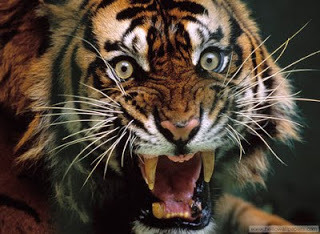
Published on January 19, 2013 05:00
Immortyl Revolution
Author of Cara Mia, Book One of the Immortyl Revolution the first of a new vampire series.
- Denise Verrico's profile
- 51 followers



